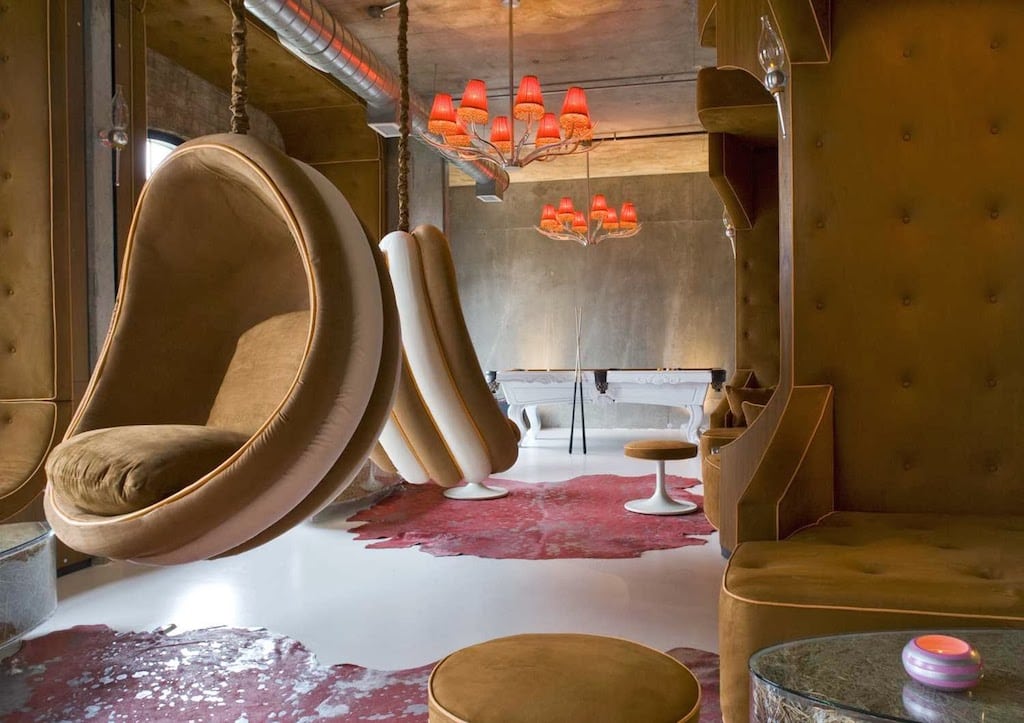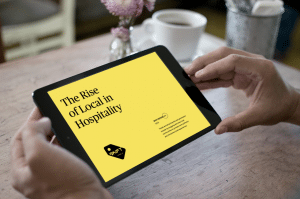The business model for NYLO Hotels was created to answer the demand for affordable design hotels with cool party spaces and creative local food and beverage, especially in second-tier markets across America.
Michael Mueller, founder and CEO of NYLO, was instrumental in the growth of Starwood Hotels from its inception in 1994 through 2004. He oversaw the acquisition of the Westin and Sheraton flags, making Starwood one of the largest hotel groups worldwide almost overnight, before helping engineer the W Hotels phenomenon. By 1998, Mueller was Starwood’s SVP of acquisition/development for Europe, Africa & the Middle East.
In 2004, Mueller moved out on his own to launch NYLO Hotels from scratch, designed around the all-pervasive enthusiasm for New York-style loft design, hence the name, and the general shift toward more attuned lifestyle design in everything from residential real estate to Apple and Chipotle.
During those years, the boutique hotel craze was barnstorming the hospitality industry something fierce. Indie design hotels were outperforming traditional hotels by a large margin, according to Mueller in Profile, and he had an epiphany: “My belief was that if it worked well in gateway cities, such as New York and L.A., it would work well everywhere. My idea was to create a boutique hotel brand at a price point affordable to a larger segment and targeted toward a wider demographic.”
Growing that wider audience began, in all places, in the suburbs north of Dallas with the launch of NYLO Plano in 2007, followed by two more hotels in the Dallas/Ft. Worth corridor and one in Providence. NYLO New York City opened last year in Upper West Side Manhattan, and NYLO Nyack is scheduled to open its doors in upstate New York later this fall.
The Manhattan property on West 77 Street off Broadway has a large glass garage door fronting the industrial-themed lobby with an intimate ground level bar and various seating areas on different levels. The bar is the lobby, as is the trend for many newbuilds these days. That’s surrounded by a kind of Jazz Age speakeasy sitting room and a long library beside the reception desk.
Adjacent to the hotel, the RedFarm eco-Chinese restaurant and Serafina pizza joint are popular local favorites. In fact, if you didn’t know the backstory behind NYLO as a brand, you wouldn’t know this hotel was part of a larger chain, and that’s exactly how Mueller wants it.
Following is our Q&A with the NYLO founder.
Skift: Can you provide a little more insight into your motivation behind the brand launch?
Michael Mueller: Our motivation really was to bring what we saw as a burgeoning trend towards a higher designed hotel, and offer a new concept that would fill a niche that wasn’t being filled. That was a sort of upscale, full-service boutique hotel with an urban design esthetic that would be developable and provide a return on investment, not just in major gateway cities but in secondary markets as well.
Most boutique concepts at that time were more luxury oriented and very expensive to develop — and very expensive to operate. And they really only made sense at such a high average rate in gateway cities with rates that would support them.
We wanted to create something that was just as unique and interesting from a design perspective, but do it at a cost that allowed us to build hotels in smaller markets as well. And then on the design aesthetic, our niche was kind of an urban loft design. Something that was not too edgy.
It was something we wanted to be edgy as in different and unique, but still comfortable and warm and timeless and not trendy. Something that would stand the test of time and not feel cold.
Skift: So the goal was to scale what you were doing with Starwood in terms of design branding?
Mueller: Yes, something that would appeal to a wide demographic. One of our goals as well, you know, quite frankly, was to create something that I was comfortable going to, and hanging out, and not just staying as a hotel guest but visiting for the food and beverage and meetings also. The goal was really to be the most unique design hotel in our markets.
Skift: Who is the NYLO customer?
Mueller: We really don’t target any traditional target demographic. We target more of a psychographic, we try to target people who are interested in art, music, cultural events, sports, people who are highly active. People that tend to embrace technology. People who are interested in dining out and trying new restaurants. Really, a highly active, highly social person.
One of the big hesitations we got, and some early criticisms we heard, was that people in places like Plano, Texas, where we have a hotel, or anyone not in a big city market wouldn’t get it, accept it or like it. So yes, it’s definitely one of our beliefs that people everywhere appreciate good design, whether they live in Des Moines, or whether they live in New York and have to travel to Des Moines.
There’s a much wider group of people out there that not only appreciate good design, but also good service and ambience and art and music. And they’ll seek it out, and seek to stay with us, and have a more emotive and unique experience as opposed to a cookie cutter hotel.
Skift: Who is responsible for the NYLO design narrative, and what has been some of the feedback?
Mueller: When I started the company, I started with a designer named Stephan Dupoux, of Dupoux Design, who was primarily just a designer at that time. He had designed the original Nikki Beach. He designed over a dozen of the hottest, at that time, nightclubs and restaurants in Miami and another dozen in New York City.
He and I worked on the original concept together, and he obviously was very instrumental in creating the original design vision, but since then we’ve worked with different designers on specific projects. So each one of our hotels has a different designer.
For every 95 positive comments we hear about the design, maybe we get four or five that are not positive. You can’t please everybody. Overwhelmingly, people appreciate the urban loft style aesthetic.
All of the artwork is original, and it’s all created by artists in the communities in which our hotels are based. By and large it’s by students and up-and-coming artists, and it’s a way for them to get their art out there and recognized.
We get a lot of good comments on our guest rooms. Specifically, we worked with Simmons to develop the NYLO Nyte mattress, which is probably one of our big compliment getters. It’s an extremely high-end luxury mattress that’s very comfortable with luxury level linens and terry. So for those customer touches we went to a luxury level.
Skift: Having just visited the West Side hotel, it’s interesting how the restaurants feel like standalone local establishments, but they’re semi-connected to the hotel.
Mueller: We get a lot of positive comments on our food and beverage. We have some great outlets and great social spaces where we have bars and restaurants combined. From day one, a big part of our brand is being local, on many different levels. I think we were probably the first to do that on the art side, you know, all original art by local artists.
On the food and beverage side, our restaurants are pretty eclectic, and we operate all of them. Actually our restaurant business is predominantly local. Our guests only make up a small part of our food and beverage business. Our goal has always been to become the local hotel, one that the community is proud of and wants to send their customers to.
Skift: Do you find that, as a somewhat smaller, community-driven hotel company, you receive a higher percentage of direct bookings versus the larger brands?
Mueller: For us, our website is a big source for reservations. We also have a sales team at each property; our group business is primarily booked by our sales teams onsite, working with the local community. We get a lot of reservations directly through them. We have a lot of corporate accounts both at a local level and a corporate level. At each hotel we’ve been fostering a lot of relationships with corporations that have a lot of room demand in the local markets that we’re in. Those bookings may come through the GDS, they may come direct, they may come through our website.
We’re in the same distribution channels as everyone else, but yes, I think partly because of us being a smaller niche brand, I think that the types of guests that we go after are more likely to book us direct online. They’re going to be a little picky about where they’re staying, and they’re looking for somewhere that best suits their personality.
Skift: What are one or two things that you learned at Starwood that you’ve tried to incorporate at NYLO?
Mueller: Oh boy. You know, I was with Starwood from the very beginning, and the biggest thing I appreciated and liked about Starwood was that it was very, at the time, in the early days, it was a very flat organization and very innovative. And that is something I wanted to make sure that we continued to do, to be relatively flat and accessible and innovative, and not be tied down by big company bureaucracy that you naturally get to when you become a certain size.
Greg Oates covers hotel/tourism development and travel brand media. He has toured over 1,000 hotels in 50+ countries. email / twitter
Have a confidential tip for Skift? Get in touch
Tags: architecture, starwood
Photo credit: NYLO Plano in Texas brought boutique design to the 'burbs NYLO Hotels

